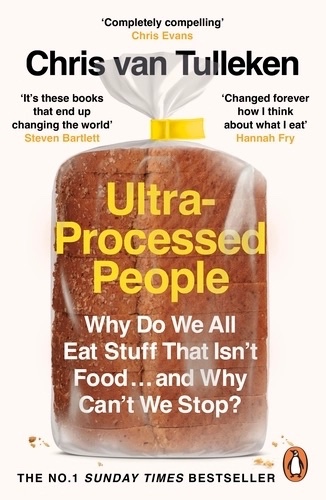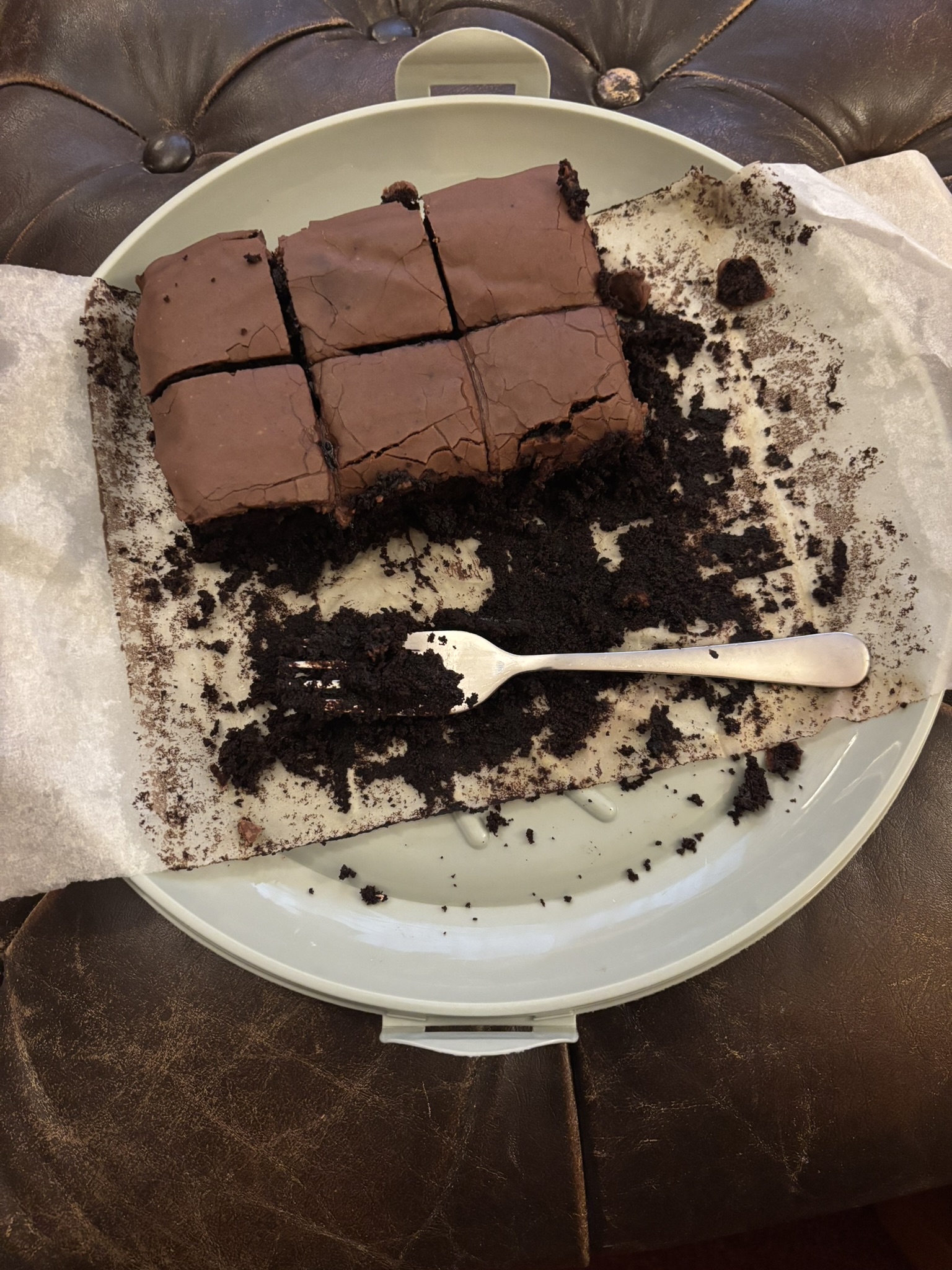Palaeolithic Age
2.5m years ago humans were hunter/gatherers and they ate mainly uncultivated fruits, roots or tubers, vegetables, and sometimes honey, fish, and meat such as bison, the latter being eaten raw until the discovery of fire. They crafted stone tools to obtain and prepare their food. One of our members showed us a flint axe head that her husband had discovered on Chanctonbury Ring. What a thrill to hold something that had been made by stone-age man!
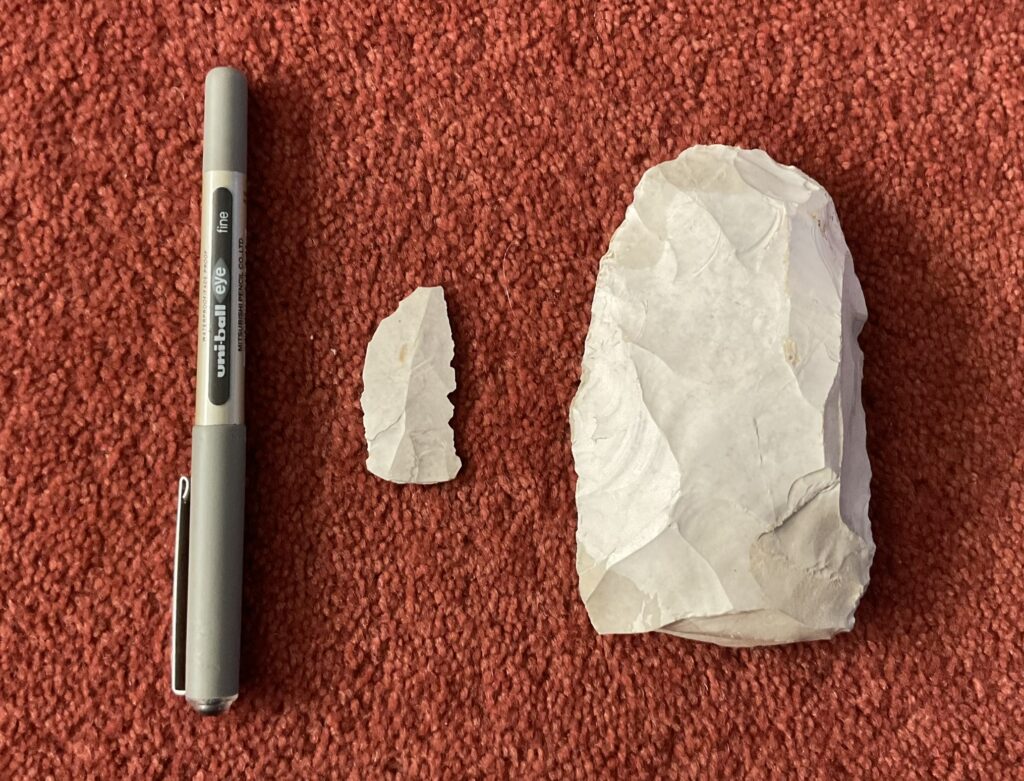
Mesolithic Age 10,000-4000BC
Birds, leaves, seed and shellfish were added to the diet
Neolithic Age 4000-2200 BC
We know from the well-preserved hearths and stone boxes at Skara Brae, Orkney, that food was cooked by this time. The first farmers grew wheat and barley and raised animals such as cows, pigs and sheep.
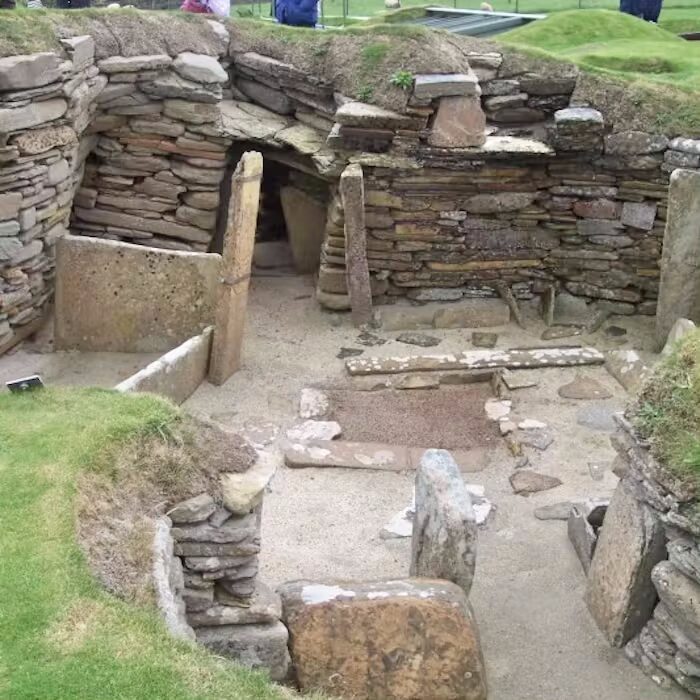
The Bronze Age 2200-800 BC
Beans, peas and spelt wheat were being grown by this time
The Iron Age 800 BC- AD 43
The earliest known chicken bones date to this period.
The Roman Period AD 43-400
The Romans introduced wine, dates, figs and game (rabbit, hare, pheasants) and vegetables such as cabbage, leeks, onions, turnips as well as grapes, walnuts, pepper, garlic, basil and thyme.
The Middle Ages 400–1485
Sugar was discovered by western Europeans during the Crusades, with the first recorded sugar in Britain noted in 1099. It remained an expensive luxury until the 18th century.
The Tudor Period 1485- 1603
The first written record of turkeys being raised in Britain dates to 154l, and the earliest potatoes were brought to Europe in about 1570 by Spanish explorers.Widespread eating of rice only started in the 15th century, usually in the form of a pudding.
The Stuart Period 1603-1714
Surprisingly, the sweet orange was unknown in Europe until the end of the l5th century, when orange trees were first brought to the Mediterranean area. Coffee and tea were widely available to buy as an expensive delicacy by the mid- 17th century. Broccoli came to Britain in 1700.
The Modern Era
The Depression 1929-1941
Food was simple, cheap and filling. Common meals were soup, stews and dishes made with beans, potatoes and seasonal veg.The US government provided food assistance with flour, lard, canned goods and powdered milk. Reference was made at the meeting to a book, The Four Winds, which is set against the backdrop of the Great Depression.
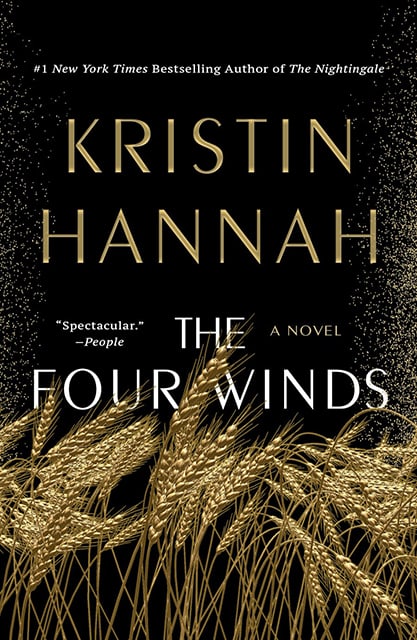
A member brought a ‘Depression’ chocolate cake that she had made without any eggs butter or milk! You’ll find the recipe here https://iambaker.net/depression-cake/
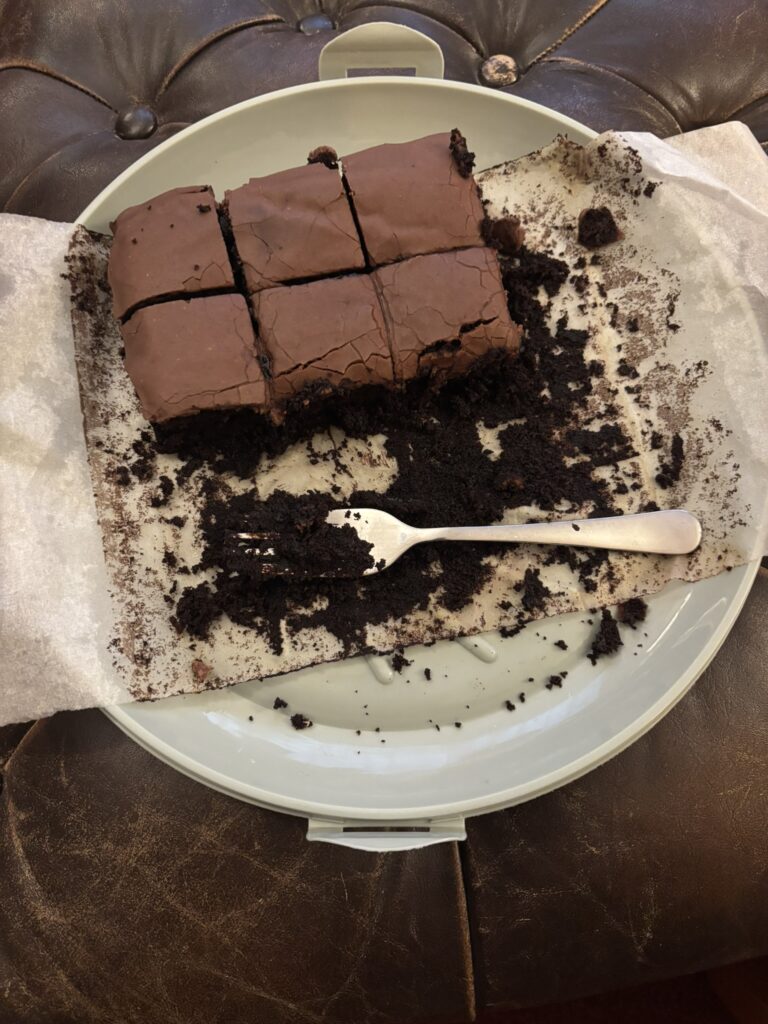
Wartime Rationing 1940-1954
Some of our members were actually able to remember this period. A member had a memory of a child who, given a banana after the war, tried to eat the whole thing, not knowing that the fruit had to be peeled.
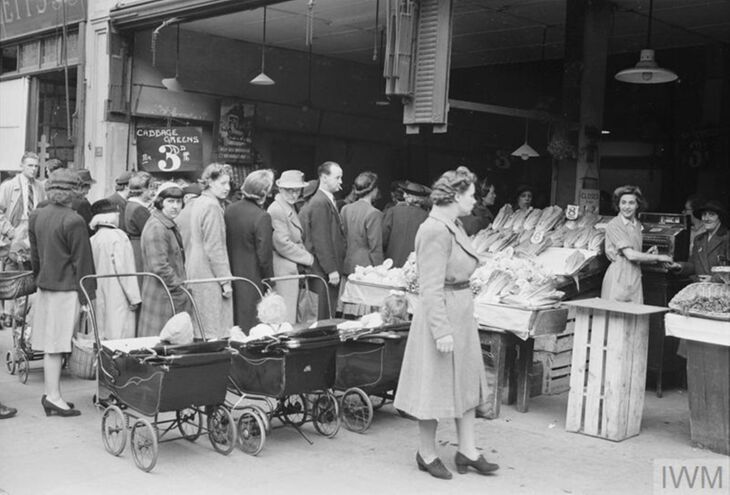
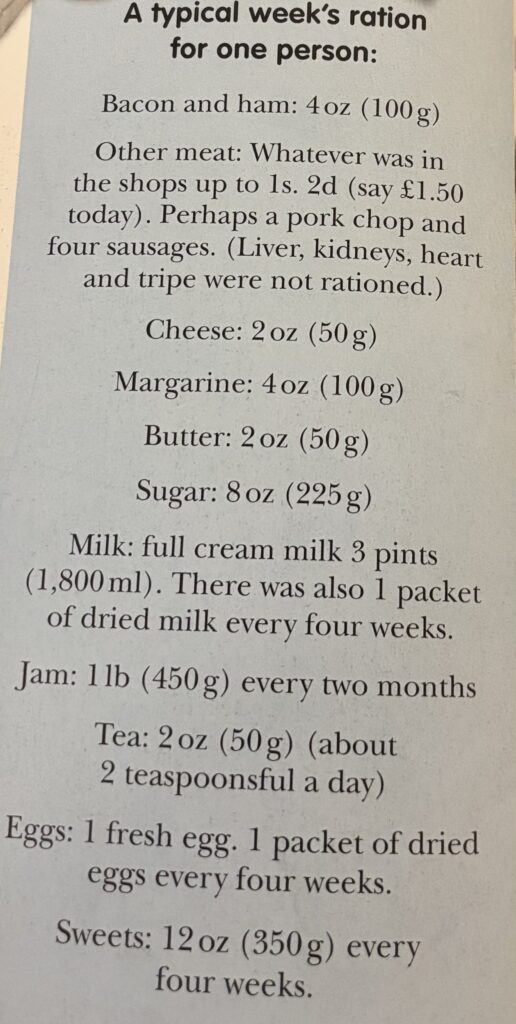
To bring us right up to date we were given an overview of Chris van Tulleken’s book, Ultra-Processed People, with a warning that we should read the labels on all the foods we buy, and if any of the ingredients are things that you would never have in your kitchen cupboards, don’t eat it!
